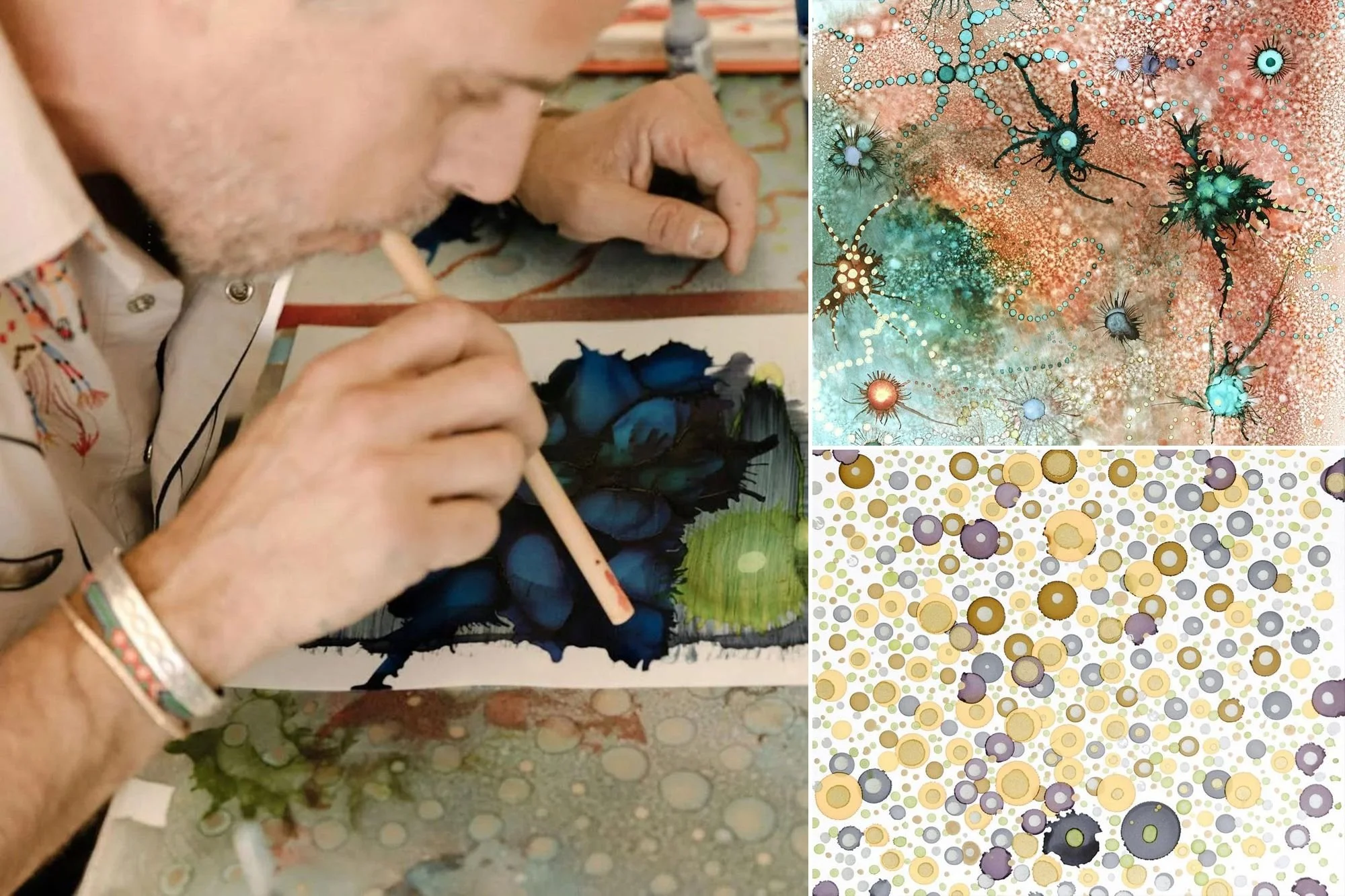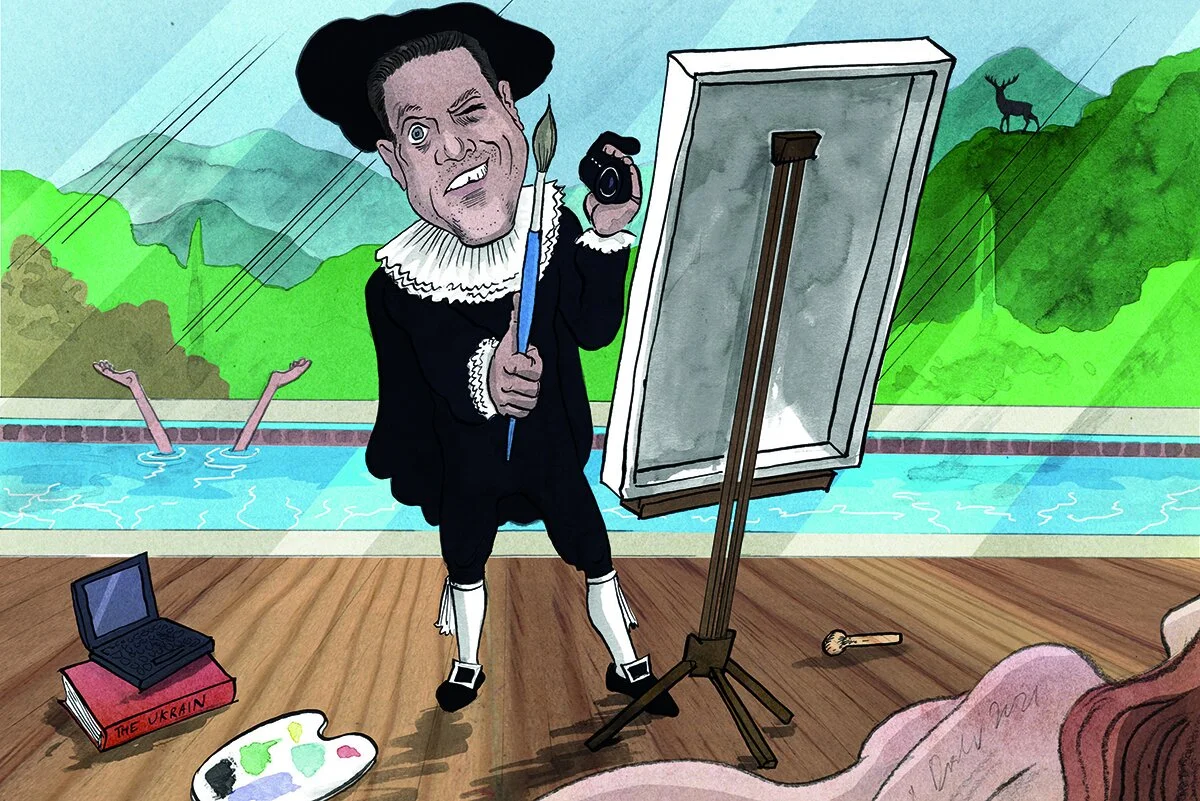THE SPECTATOR WORLD EDITION,
Hunter Biden: portrait of the scam artist
I can’t think of many other art shows that have been more heavily discussed than seen
“Put your phone in your pocket and keep it there.” So I was told by the guard blocking the entrance of the Georges Bergès Gallery. I wasn’t going to argue. That’s because I was about to become one of the few to see The Journey Home: A Hunter Biden Solo Exhibition.
I can’t think of many other art shows that have been more heavily discussed than seen. This critic is guilty as charged. But the press, and the public, are not all to blame for the ratio’d attention. The Journey Home has been open “by invitation only” for just about its full run. Invitations have not been abundant. You will not find the show listed on the gallery website or given any sense of its start or end. After a vandal painted “Daddy” on the gallery walls in hairspray, it’s been a soft launch and soft close for the hard-living show. Instead the paparazzi have swarmed outside. Last month the political painter Scott LoBaido unveiled his “Portrait of the Scam Artist” on the street; the work depicts Biden painting doodles in bed with his crack pipe while collecting communist cash. But Biden, born again and again and again, has been undeterred. That’s what this show, at least for him, is all about. “Biden attempting to save his soul,” is how the critic Donald Kuspit has put it, “not simply express it.”
Hunter himself arrived at the gallery earlier this month with his new wife Melissa Cohen and new legitimate heir in tow, landing on the front page of the New York Post. “Vincent Van Dough,” declared the tabloid, “He’s in the Monet: Hunter Biden’s Corrupt Art Show Opens in NYC.” As it happens, just as soon as it opened, the show has closed. It could have been last week. Or maybe it was yesterday. In any case, one Friday evening, the doors were open, and I went in.
“Hunter will go down as a great artist for this century,” Georges Bergès has told the press. “If anything, his father will be known as the father of a great artist.” It has been quite a fifteen-minute run for Berges’s Soho shop. The New York Times gave The Journey Home the full review treatment at the start of November. “Emotionally Honest, Generically Smooth,” ran the headline. Jason Farago described this Hunter Biden Experience as “rather random, rather personal, rather ingenuous.”
Not to be outdone, Kuspit has called Biden a “master of color” making “masterpieces of what has been called transcendental abstraction.” He compared the president’s son to Kandinsky, only better: “Biden plays the keyboard of colors as deftly as he does, however different his abstract music, for it has a more urgent sense of purpose.” When I read this review, my first thought was that Kuspit must be the Zodiac Killer. I can’t imagine anyone writing such words who is not also looking for a presidential pardon. Now we see that Kuspit is curating the next show at Bergès. You don’t need to be Burisma to take a bite out of Biden.
The gallery was eerily empty for my visit. The house lights were dimmed save for a spotlight on each of the works. A brick of incense burned in a side room next to a small tinkling fountain. There were quoteworthy sayings written on the walls and right on the paintings. The gallery, the art, and the presentation all conveyed the impression of a physical-therapy office that doesn’t take insurance. Only Bergès’s occasional high-pitched cackle, echoing across the gallery from some undisclosed location, was there to break the spell.
It is the spell of privilege, of permanent adolescence, of living life high above common concern and plastering it all with bongwater symbols and sayings that The Journey Home tries to cast. As non-fungible tokens of grift and graft — such considerations dwell beyond the event horizon of what you see on the gallery walls. Instead what you get are tattoo-like symbols of snakes, birds, dragons and Celtic writing all stenciled in gold pen. You read the saying by Joseph Campbell that “we have only to follow the thread of the hero-path.” The pre-socratic Greek philosopher Parmenides of Elea informs us that “one path only is left for us to speak of, namely, that It is.” This one, also written in gold pen, appears on a painting featuring a bald female figure resembling the V’Ger robot from Star Trek: The Motion Picture.
When Biden descends from this astral plane, he lets his paints run in bloody patterns. He drips out pointillist landscapes trip-trap. His blows pigments into floral patterns, in particular across “Untitled #13” — arrangements that are inoffensive but inauthentic. The wild artist is falsely tamed.
You find a sweep of styles and techniques presented here across two floors, none of it dated, none with any sense of direction. But those works labeled “mixed media” seem to convey a truer artist. Here through computer manipulation, Biden has distorted images, mostly of himself. He prints them out and doodles on top of them. When I entered the exhibition, there was a velvet rope closing off the downstairs half of the show. At some point it came down and I descended. A gallerist followed close behind. “One of us has to be downstairs with you,” he explained, “just in case…you never know.” Here, in “Hockney,” we catch a glimpse of the pool of Biden’s Hollywood Hills home — and Ms. Cohen-Biden’s derriere floating therein. There it is again, in “Self Portrait,” behind some crystal schlock, another bikini-clad babe next to Biden, all covered in paint.
In Freudian psychoanalysis, it is said that an anal stage follows the oral stage in early-childhood development. Biden has lived life as the anal-explosive son, but many of his paint-the-dots numbers are fussy, restrained, retentive. It seems more honest to start with those digital images that made him famous and manipulate them further, as he does here, pouring paint or wherever else on the end result. If your art is crap, it’s best not to pull the handle.











